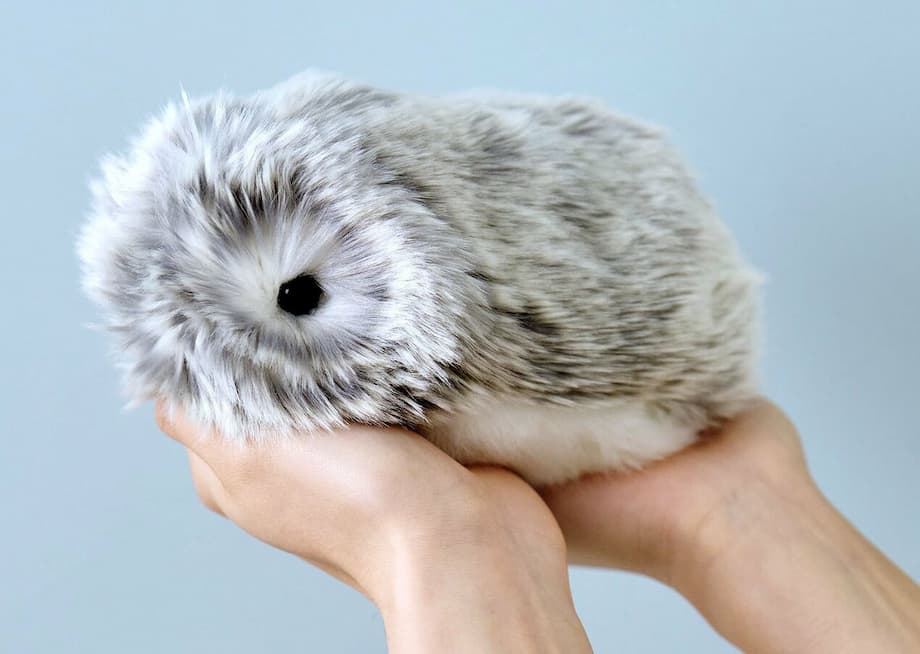The Rise of Moflin: Japan’s Latest AI Pet Sensation
In a country renowned for its technological innovation and affection for all things cute, a new kind of companion is taking Japan by storm. Meet Moflin, a fluffy, AI-powered robot pet developed by Casio Computer Co., which has quickly become a cultural phenomenon. Unlike traditional robotic toys, Moflin is designed to develop its own unique personality and emotional responses, learning and evolving based on how it is raised and interacted with by its owner. Since its launch in November, Moflin has sold over 7,000 units by March, surpassing Casio’s initial sales targets and capturing the imagination of thousands—especially women in their late 30s and 40s, who make up the majority of its owners.
What Makes Moflin Unique?
Moflin stands out in the crowded field of robotic companions thanks to its advanced artificial intelligence and tactile design. Resembling a cross between a guinea pig and a character from a Studio Ghibli film, Moflin is soft, featureless, and irresistibly cuddly. But beneath its plush exterior lies a sophisticated AI system capable of demonstrating over four million distinct personality traits. Each Moflin recognizes the person who interacts with it most as its owner, gradually learning their preferences through actions such as petting, cuddling, and talking.
Unlike earlier digital pets like Tamagotchis or even Sony’s Aibo robotic dog, Moflin’s personality is not pre-programmed. Instead, it evolves over time, responding to the owner’s care and attention. If Moflin is regularly cuddled and spoken to, it becomes more vocal, active, and affectionate. If neglected, it can display signs of stress, anxiety, or sadness—mirroring the emotional responses of real animals. Owners can monitor their Moflin’s emotional state and progress through a dedicated smartphone app, which also allows them to name their pet and track its development.
Emotional Intelligence and Interaction
Moflin’s AI is designed to simulate emotional intelligence, a field of artificial intelligence focused on enabling machines to recognize, interpret, and respond to human emotions. Through a combination of sensors, microphones, and algorithms, Moflin can detect the tone of its owner’s voice, the way it is touched, and even the frequency of interactions. This data is used to adjust its behavior, creating a feedback loop that makes each Moflin’s personality truly unique.
According to Erina Ichikawa, the project lead at Casio, the goal was to create a companion that could provide emotional support during personal or work-related challenges. The idea took off after an engineer introduced a prototype designed to capture the cuteness and comforting presence of small animals. The result is a robot that not only looks adorable but also feels emotionally responsive, offering a new kind of companionship for those who may not be able to own traditional pets.
Why Are AI Pets Like Moflin So Popular in Japan?
Japan has long been at the forefront of robotics and artificial intelligence, with a cultural openness to integrating robots into daily life. The popularity of Moflin reflects broader social trends, including an aging population, increasing urbanization, and a growing number of people living alone. In fact, Japan now has more pets than children under 15, and the demand for alternative forms of companionship has never been higher.
The COVID-19 pandemic further accelerated the loneliness epidemic, prompting many to seek comfort in digital and robotic companions. Moflin’s rise coincides with a surge in internet searches for “AI pet” and a booming global market for social robots, which reached nearly $7 billion in 2023 and is projected to hit $57 billion by 2032, according to IMARC Group. The Asia-Pacific region, particularly Japan and China, leads this trend, influenced by cultural factors and a tradition of embracing robots as helpers and friends.
Targeting Adult Stress and Loneliness
While robotic pets have traditionally been marketed to children, Moflin is explicitly aimed at adults—especially women seeking a supportive presence in their lives. Casio’s marketing emphasizes Moflin’s role as a mental health companion, offering stress relief and emotional comfort without the responsibilities of caring for a living animal. Owners report that their Moflins help them unwind after a long day, providing hugs, cuddles, and a sense of being seen and heard.
Haruka Uto, a Tokyo resident and Moflin owner, describes her two Moflins as initially acting like babies but gradually becoming bolder and more expressive. She notes that the robots seem to be in a good mood when they hear her voice and help her refresh when she’s tired from work. Some owners even take their Moflins on outings, dressing them up and carrying them in baskets, further blurring the line between toy and companion.
Inside the Technology: How Does Moflin Work?
Moflin’s lifelike behavior is powered by a suite of sensors and AI algorithms that process environmental data in real time. The robot can detect touch, sound, and movement, allowing it to respond to petting, cuddling, and spoken commands. Its AI draws from a vast library of audio and movement patterns—over four million combinations—to express a range of emotions, from happiness and excitement to stress and lethargy.
Moflin’s emotional state is not just for show; it influences how the robot behaves and interacts with its owner. For example, a well-cared-for Moflin will seek attention, make cheerful noises, and move energetically. If ignored or startled, it may become quiet, withdrawn, or even “sleepy,” reflecting a drop in mood. Owners can use the companion app to get a more detailed readout of their Moflin’s feelings and track its growth over time.
Battery Life and Maintenance
Each Moflin comes with a dedicated charging bed, offering about five hours of active use on a full charge and taking approximately 3.5 hours to recharge. Casio also offers an optional annual subscription service, Club Moflin, which covers repairs, fur replacement, and even access to a “salon” for washing and cleaning the robot’s fur. This attention to maintenance underscores the company’s commitment to making Moflin a long-term companion rather than a disposable gadget.
Moflin in the Context of Social Robotics
Moflin is part of a broader movement in social robotics, where machines are designed to interact with humans in emotionally meaningful ways. Previous examples include Sony’s Aibo robotic dog, Bandai Namco’s Tamagotchi digital pets, and the therapeutic robot seal Paro, which has been used in care homes to support people with dementia and autistic children. What sets Moflin apart is its combination of tactile comfort, emotional responsiveness, and adaptability to individual owners.
Experts in the field of human-robot interaction note that the physical presence of robots like Moflin is crucial. Wenxin Li, founder of an AI startup, explains that “humans like the feeling of touch and warmth,” and that companion robots can provide a sense of presence and availability that digital-only solutions cannot. Advances in microprocessors and AI algorithms have made it possible for even small robots to exhibit nuanced emotional expressions, further enhancing their appeal.
Therapeutic and Social Benefits
Companion robots have shown promise in addressing loneliness and providing emotional support to vulnerable groups, including the elderly, office workers, and university students. In Japan, where the population is aging rapidly and many seniors live alone, robots like Moflin offer a non-judgmental, always-available source of comfort. Some care homes and hospitals are already exploring the use of Moflin and similar devices as therapeutic tools, building on the success of earlier robots like Paro.
However, experts caution that while robots can simulate emotional responses, they do not possess true sentience or consciousness. The interactions are programmed to please and comfort, but real relationships with people and animals remain more complex and valuable. As robots become more lifelike, there is a growing call for regulations to govern human-robot interactions and ensure ethical treatment of these increasingly sophisticated machines.
Challenges and Future Prospects
Despite its popularity, Moflin is not without limitations. Its emotional state is only visible through the companion app, and some users may find the experience less fulfilling than caring for a real animal. The robot’s small size and limited processing power mean it cannot run advanced language models or engage in complex conversations. Nevertheless, Moflin’s success points to a future where AI-powered companions play an increasingly important role in daily life, especially as technology continues to evolve.
Casio has not yet announced plans for an international release, but the company’s foray into social robotics reflects a broader trend among tech firms. Companies like Mattel are partnering with AI developers to create intelligent toys, while startups around the world are exploring new forms of digital companionship. As AI becomes more sophisticated and accessible, the line between machine and friend will continue to blur, raising new questions about the nature of companionship and the role of technology in our emotional lives.
In Summary
- Moflin is a fluffy, AI-powered robot pet developed by Casio, designed to develop unique personalities and emotional responses based on owner interaction.
- Since its launch in November, over 7,000 units have been sold in Japan, with strong popularity among women in their late 30s and 40s.
- Moflin’s AI enables it to recognize its owner, adapt to routines, and express over four million personality traits through sounds and movements.
- The robot is marketed as a mental health companion, offering stress relief and emotional support without the responsibilities of a real pet.
- Moflin’s success reflects broader trends in social robotics, addressing loneliness and providing comfort in a rapidly aging and urbanizing society.
- While Moflin cannot replace the emotional bond of a living animal, it represents a new frontier in human-robot relationships and the evolving role of AI in daily life.












